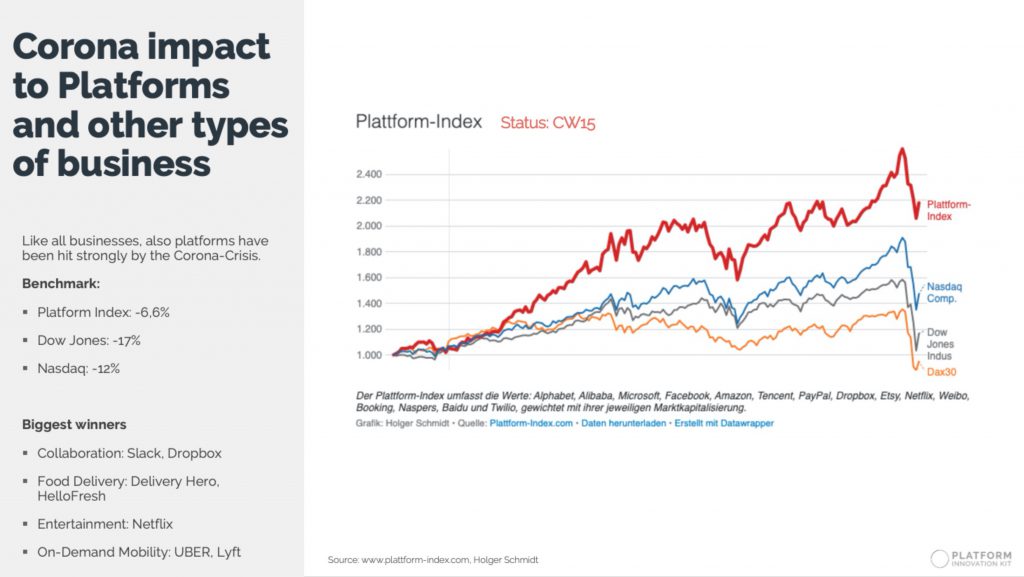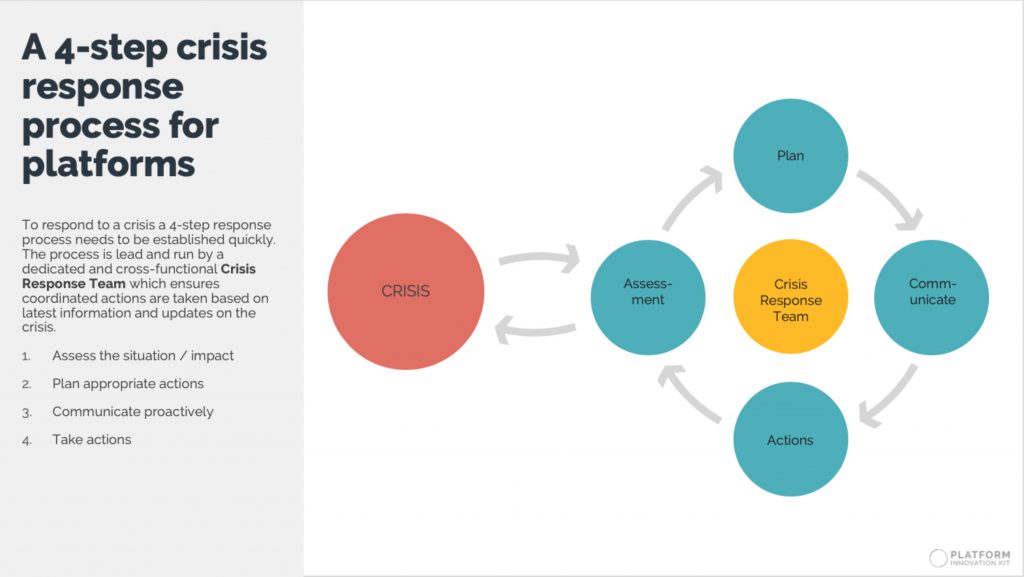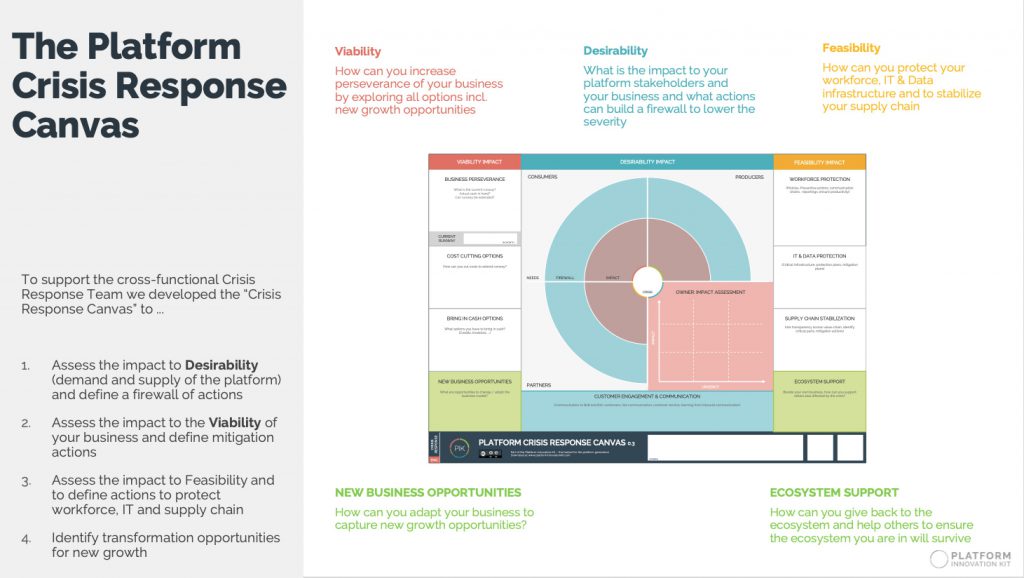How to respond to a crisis as a multi-sided business
Key Takeaways for the Reader
- Platforms are not immune against the Corona Virus and some of them are in major trouble
- To survive a crisis a structured 4-step process is required
- The process is led by a “Crisis Response Team”
- A new “Crisis Response Canvas” supports the work of the team giving a structured framework to assess the situation, evaluate options and to take actions
Intro
The Corona-Crisis is in full swing and the impact to business (economics), society and environment are big. After the supply-shock in February, when China locked-down production, we face now the demand-shock. Everybody in Europe and US (as biggest markets) are cancelling or postponing orders to reduce costs. Also platforms (multi-sided businesses) are impacted and have to turn-on crisis mode to survive. Based on our close collaboration with platforms we developed a “Platform Crisis Response Canvas” to support platforms to understand the threats, evaluate options and take the right actions to survive and even to identify growth opportunities.



The 4-step Crisis Response process
Facing a “crisis” is nothing new for startups and corporates … but the magnitude of the Corona-Crisis is something nobody faced the last centuries. To stay ahead of the development and not just to react to the crisis, we recommend a well-structured 4-step process — executed by a cross-functional team.



Step Zero — Form a Crisis Response Team
Because the crisis has impact to all areas of your business, you have to ensure that all of them are represented in your Crisis Response Team. It’s not just about sales and marketing, but also the supply side / production and your workforce. Bring them all in one room and work closely together. This helps to shorten communication cycles and timely reaction to latest news and changes.
Step One — Assess the situation
After you gathered your team, you should breath, calm down and do a structured analysis of the situation. Guiding questions should be:
- What is the situation?
- What is the impact to our stakeholders (consumers, producers, partners) and how will they react? Try to foresee their reaction to be proactive
- What will be the impact to your business — on viability side and feasibility side of your business model
- How long will you survive? How much cash is required?
Step Two — Evaluate Options and Plan
Based on your initial understanding of the impact, you can now start to list options and evaluate them.
- Where is the fire burning and you have to start first?
- How can you keep demand up? Stimulate demand?
- How can you ensure supply is secured?
- How can you cut costs?
- How can you get cash or additional funding?
- What is secondary and can stay in the backlog?
Two things many businesses overlook are “Growth opportunities” and “Ecosystem Support”.
In each crisis lie new opportunities … if you are an entrepreneur you will quickly scan and understand those opportunities and adapt your business … to secure additional income and maybe a future new business after the crisis.
Additionally it is important to think about the broader ecosystem you are in and how you can support it. E.g. by producing face masks to ensure that the impact to your local audience and maybe workforce is lower. This will not immediately save your business, but it will be honored in the long run.
Step Three — Communicate with your ecosystem
Before you take the actions you should start communicating. Be transparent to your customers and stakeholders. Open and timely communication builds trust and trust is essential in each crisis. People will remember how and how often you communicate, because they also want to understand want will happen to them.
Step Four — Take Actions
We talk here about short timeframes. Some actions will be immediately some 2–3 days. As a Crisis Response Team you have to ensure that those defined actions are taken and the results are measured / monitored and reported.
This is a Loop — no a linear process
As you can see in the chart … the process will re-start with an assessment of the situation. Depending on the crisis, you should have sprints / loops of 1–3 days to ensure you re-assess the impact of the crisis and understand the impact of your actions to your business.
The Platform Crisis Response Canvas
To support the process we developed a new canvas for multi-sided businesses to perform a well-structured analysis / assessment and to identify appropriate actions and communication strategies.



The canvas covers 5 major areas
- Desirability — What is the impact to your multi-sided customers and how can you build a “firewall” of actions to lower the negative impact
- Viability — What is the impact to your business model and how can you lower costs or bring in new cash to extend runway.
- Feasibility — How can you protect your value-chain — protecting workforce, protect IT and Data architecture, stabilize supply chain
- New Growth Opportunities — How can you identify and capture new growth opportunities as each crisis will also spark demand for certain services / products
- Ecosystem Support — Think about the ecosystem you are in … how can you support it and give back … the ecosystem and people will honor it with trust in the long run.







